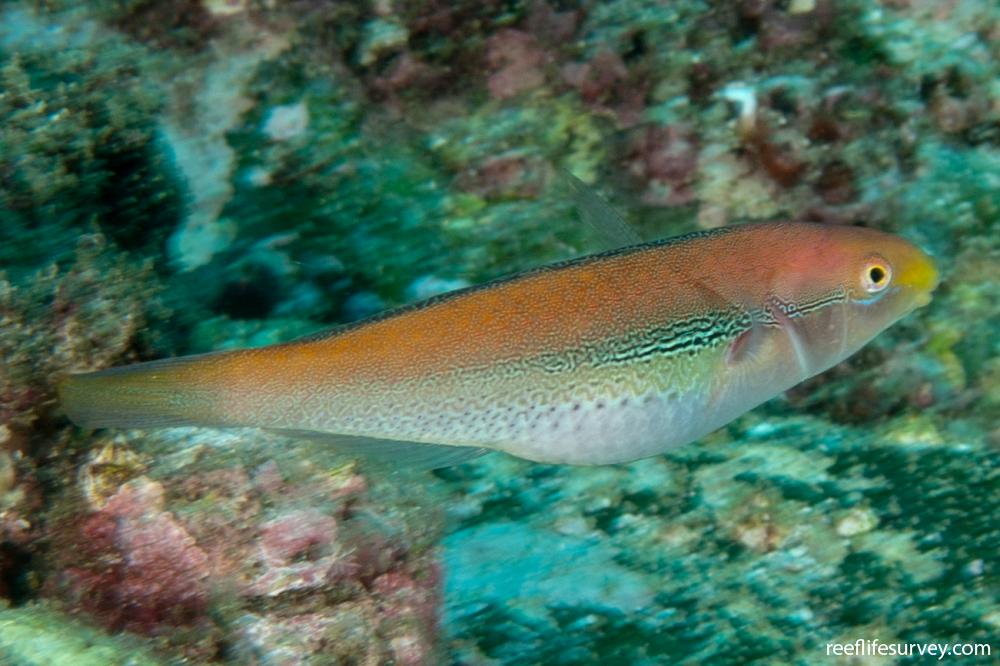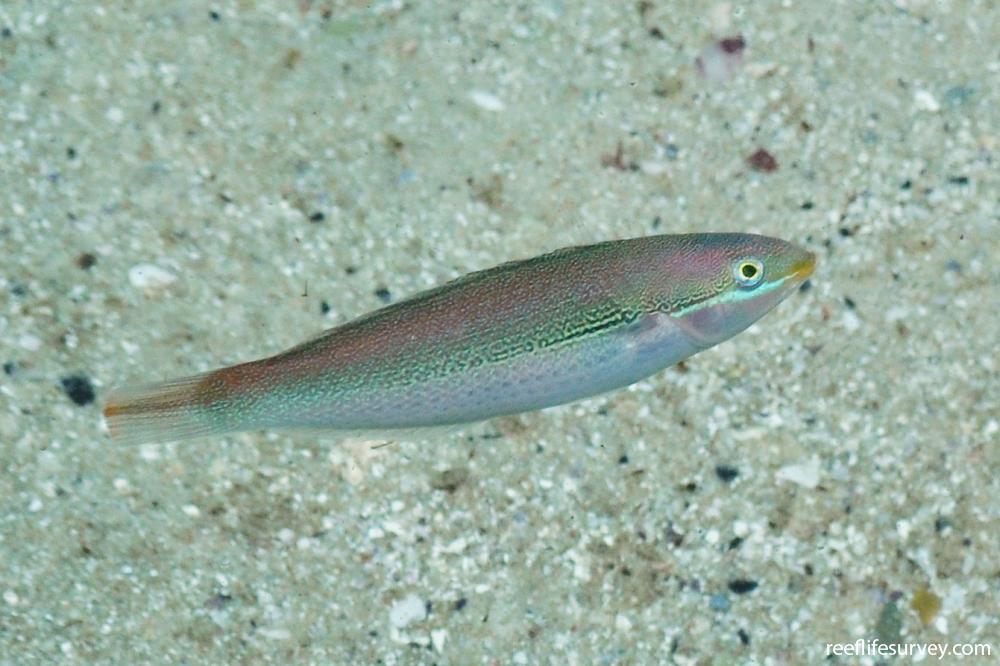Stethojulis interrupta
Cut-ribbon wrasse | Brokenline Wrasse | One-line Rainbowfish | Spot-bellied Rainbowfish | Leptojulis interruptaSimilar Species
Same Genus
Distribution
Temperate Australasia, Temperate northern Pacific, Tropical Indo-Pacific
Description
Male distinguished from other Stethojulis species by broken mid stripe. Females and juveniles highly variable, but often have yellow snout and distinct black mottling pattern (like a mackerel) behind pectoral fin - but this can be difficult to see in dark/striped forms. Small schools, moving and feeding like sparrows at a cafe.
Information
Max Size: 13 cm
Sea Temperature Range: 15.4-30.9°C
Depth: 1-18 m
Habitat Generalization Index: 16.89
Also referred to as the SGI (Species Generalisation Index), this describes the habitat niche breadth of the species. Species with values less than 15 are found in a relatively narrow range of reef habitat types (specialists), while those over 25 may be found on most hard substrates within their range (generalists). Learn more here.
Conservation and Rarity
IUCN Status: Least Concern
Occurrence: Frequent (18.4% of sites)
Occurrence describes how often the species is found on surveys within its distribution. It is calculated as the % of reef sites surveyed by RLS divers across all the ecoregions in which the species has been observed
Abundance: Several (5 per transect)
Abundance is calculated as the average number of individuals recorded per RLS transect, where present.
Edit by: RD Stuart-Smith, GJ Edgar, AJ Green, IV Shaw. 2015. Tropical Marine Fishes of Australia. Reed New Holland























